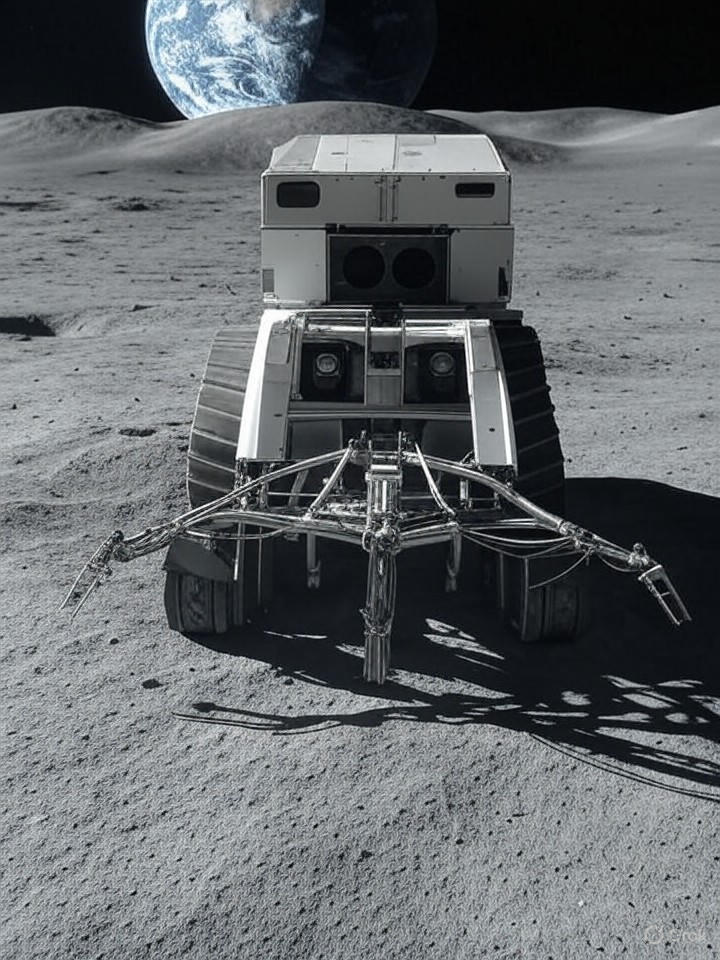Science
Interlune Aims for Lunar Helium-3 Mining by 2028

A pioneering mining company, Interlune, has announced its plans to extract helium-3 from the lunar surface by March 2028. This rare isotope is gaining attention due to its potential applications in clean energy and quantum computing. The discovery of substantial helium-3 deposits highlights a growing interest in space mining, as both nations and private entities seek to capitalize on the moon’s untapped resources.
Helium-3, which is not found in significant quantities on Earth, has accumulated in the moon’s regolith over billions of years due to solar wind exposure. Unlike the more prevalent helium-4, helium-3 is non-radioactive and has the potential to fuel nuclear fusion reactors, offering a pathway to limitless and environmentally friendly energy. Industry experts estimate helium-3 could be valued at up to $20 million per kilogram, driven by its demand in high-tech fields.
The Geopolitical Landscape of Lunar Resource Extraction
Interlune’s announcement occurs in a climate of increasing competition between superpowers, particularly the United States and China, both of which are pursuing lunar dominance. According to a report from Space.com, Interlune’s initiative aligns with broader ambitions to harness helium-3 for quantum computing, where it is essential for cooling systems that maintain ultra-low temperatures. The company has already secured agreements, including one to supply up to 10,000 liters of extracted helium-3, indicating early confidence in its market potential.
Interlune has also unveiled a prototype harvester capable of processing 110 tons of lunar soil per hour, a significant development highlighted by The Washington Post. This machinery addresses the logistical challenges of lunar operations, such as extreme temperatures and the absence of atmosphere, while aiming to minimize environmental disruption.
Technological Innovations and Future Challenges
The applications of helium-3 extend beyond energy production; it is also valuable in medical imaging and supercomputing. A piece in Forbes notes that Interlune is working on robotic systems for autonomous mining, with plans for operational readiness by 2028. This timeline coincides with NASA’s Artemis program and China’s Chang’e missions, which may help establish the necessary infrastructure for resource transport and processing.
Despite these advancements, challenges remain, including the high costs associated with space travel and the uncertain economics of transporting materials back to Earth. Proponents argue that utilizing lunar resources to build habitats or fuel depots could mitigate some of these expenses. As Interesting Engineering suggests, global superpowers view helium-3 as “moon gold,” with Russia also entering the race, potentially transforming global energy politics.
Financially, Interlune is attracting significant investment, raising funds to deploy multispectral cameras for accurate resource mapping, according to Autoevolution. A partnership with the quantum cryogenics firm Bluefors, reported by Gizmodo, represents one of the largest contracts in the space resource sector to date, further underscoring the isotope’s importance in advancing computational power.
Ethical questions also arise regarding equitable access to lunar resources under the Outer Space Treaty. Critics caution against a new wave of colonialism in space exploration. However, supporters, including those cited in European Space Agency publications, highlight the potential for shared technological benefits, such as safer fusion energy that could help combat climate change.
Looking forward, successful helium-3 mining could catalyze a broader space economy that includes the extraction of water ice, rare earth elements, and oxygen from lunar soil. Insights from 21st Century Tech Blog suggest that this could pave the way for permanent lunar settlements, reducing reliance on Earth-supplied resources. For industry insiders, scalability is crucial. If Interlune’s prototypes prove effective, the venture could attract billions in investment, transforming outer space from a scientific frontier into a profitable domain.
Ultimately, Interlune’s lunar initiative marks a pivotal moment, where the moon’s surface could become a new arena for innovation and commerce. As extraction technologies advance, the dream of harnessing extraterrestrial resources draws closer to reality, promising significant implications for Earth’s technological future.
-

 Science2 weeks ago
Science2 weeks agoInventor Achieves Breakthrough with 2 Billion FPS Laser Video
-

 Top Stories3 weeks ago
Top Stories3 weeks agoCharlie Sheen’s New Romance: ‘Glowing’ with Younger Partner
-

 Business3 weeks ago
Business3 weeks agoTyler Technologies Set to Reveal Q3 Earnings on October 22
-

 Entertainment3 weeks ago
Entertainment3 weeks agoDua Lipa Aces GCSE Spanish, Sparks Super Bowl Buzz with Fans
-

 Health3 weeks ago
Health3 weeks agoCommunity Unites for 7th Annual Into the Light Walk for Mental Health
-

 Health3 weeks ago
Health3 weeks agoCurium Group, PeptiDream, and PDRadiopharma Launch Key Cancer Trial
-

 World3 weeks ago
World3 weeks agoR&B Icon D’Angelo Dies at 51, Leaving Lasting Legacy
-

 Entertainment3 weeks ago
Entertainment3 weeks agoRed Sox’s Bregman to Become Free Agent; Tigers Commit to Skubal
-

 Entertainment3 weeks ago
Entertainment3 weeks agoMother Fights to Reunite with Children After Kidnapping in New Drama
-

 Health3 weeks ago
Health3 weeks agoNorth Carolina’s Biotech Boom: Billions in New Investments
-

 Science3 weeks ago
Science3 weeks agoNorth Carolina’s Biotech Boom: Billions Invested in Manufacturing
-

 Top Stories3 weeks ago
Top Stories3 weeks agoDisney+ Launches Chilling Classic ‘Something Wicked’ Just in Time for October









